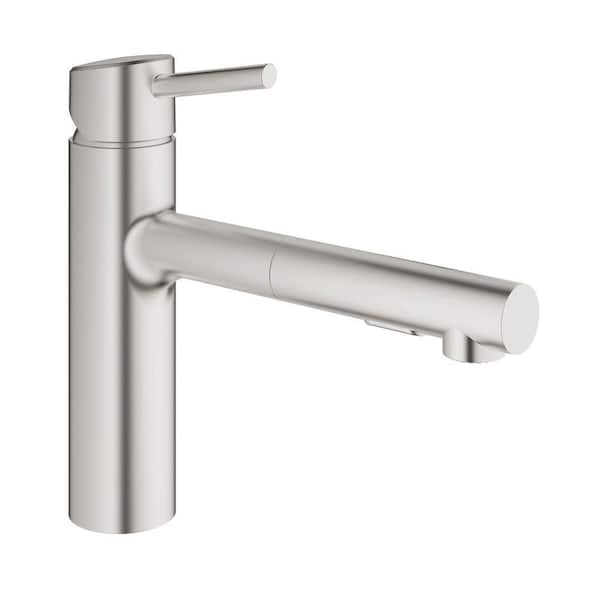
Concetto Single-Handle Pull-Out Sprayer Kitchen Faucet in SuperSteel Infinity
$278.85

Pay $253.85 after $25 OFF your total qualifying purchase upon opening a new card. 
Apply for a Home Depot Consumer Card- Single hole installation
- Dual Spray toggle switches between regular water flow and spray
- Compatible with GROHE Foot Control, model 30310000
View More Details
Free & Easy Returns In Store or Online
Return this item within 90 days of purchase.























